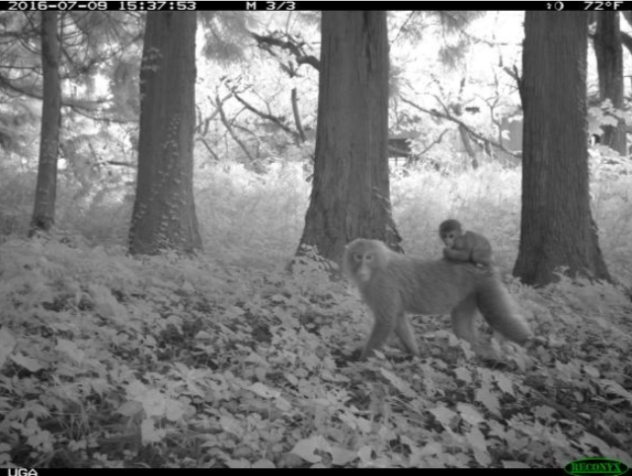
©University of Georgia
Pre-reading questions:
I will read each question. Then, please answer them.
講師がそれぞれの質問を読むので答えましょう。
- Have you seen a wild animal?
- Do you think you are friendly to the environment?
Vocabulary:
I will read the words, meanings, and sample sentences. Then, repeat after me.
単語、意味、例文を読みます。講師に続いて音読しましょう。
- population /pop-yuh-LEY-shuhn/
- discover /dih-SKUHV-er/
- harmful /HAHRM-fuhl/
- observe /uhb-ZURV/
- wildlife /WAHYLD-lahyf/
[noun] – all the people or animals of a particular type or group who live in one country, area, or place
The elephant population is declining.
[noun] – to find information, a place, or an object, especially for the first time
The scientists finally discovered a cure for the disease.
[adjective] – causing or likely to cause harm
You must re-heat your food to avoid any harmful bacteria.
[verb] – to watch carefully the way something happens or the way someone does something, especially in order to learn more about it
The doctors are observing the side effects of the vaccines.
[noun] – animals and plants that grow independently of people, usually in natural conditions
South Africa is known for its rich wildlife.
Article reading:
Please read the whole article. Then, I will check your pronunciation and intonation.
記事を音読しましょう。講師はあなたの発音とイントネーションを確認します。
Ten years after the nuclear trouble in Fukushima, Japan, a developing opulation of animals has been discovered by researchers in its abandoned places despite the radiological contamination. On March 11, 2011, the country was hit by a 9.0 magnitude earthquake, leaving more than 20,000 deaths or missing and hundreds of thousands of destroyed houses. During the disaster, three devices at the Fukushima Daiichi nuclear plant were also damaged and released harmful chemicals into the air. More than 100,000 people were forced to leave the area. Researchers from the University of Georgia (UGA) have observed that wildlife is growing in these abandoned places despite the contamination. In 120 days, they collected more than 267,000 photos of more than 20 kinds of animals using 106 remote cameras. These include raccoon dogs, wild boars, macaques, pheasants, foxes, and Japanese hares in the areas near the power plant. Meanwhile, scientists explained that this study only observes the radiological effect on wildlife populations as a whole and not individually.
True or False:
Read the sentences and identify if they are true or false based on the article.
文章を読んで、記事に基づいて正誤を答えましょう。
- Japan was hit by a 7.0 magnitude earthquake in 2011.
- The nuclear trouble mentioned in the article happened in Osaka, Japan.
- More than 100,000 people left the areas near the damaged Fukushima Daiichi nuclear plant.
- Scientists from the University of Georgia have collected photos of more than 20 animals in the said areas.
- This study, according to the scientists, observes the individual radiological effect on each animal in the said areas.
Fill in the blanks:
Choose the correct word from the table then fill in the blanks.
適切な言葉を選んで空欄を埋めましょう。
| population | discover | harmful | observe | wildlife |
- Researchers _________ traces of ancient society in the city.
- His doctor warned him against the ________ effects of smoking.
- Scientists have warned against the decreasing _______ of Japanese sea lions.
- The storm caused damage to ________.
- The doctor told him to ________ any allergic reaction after taking the medicine.